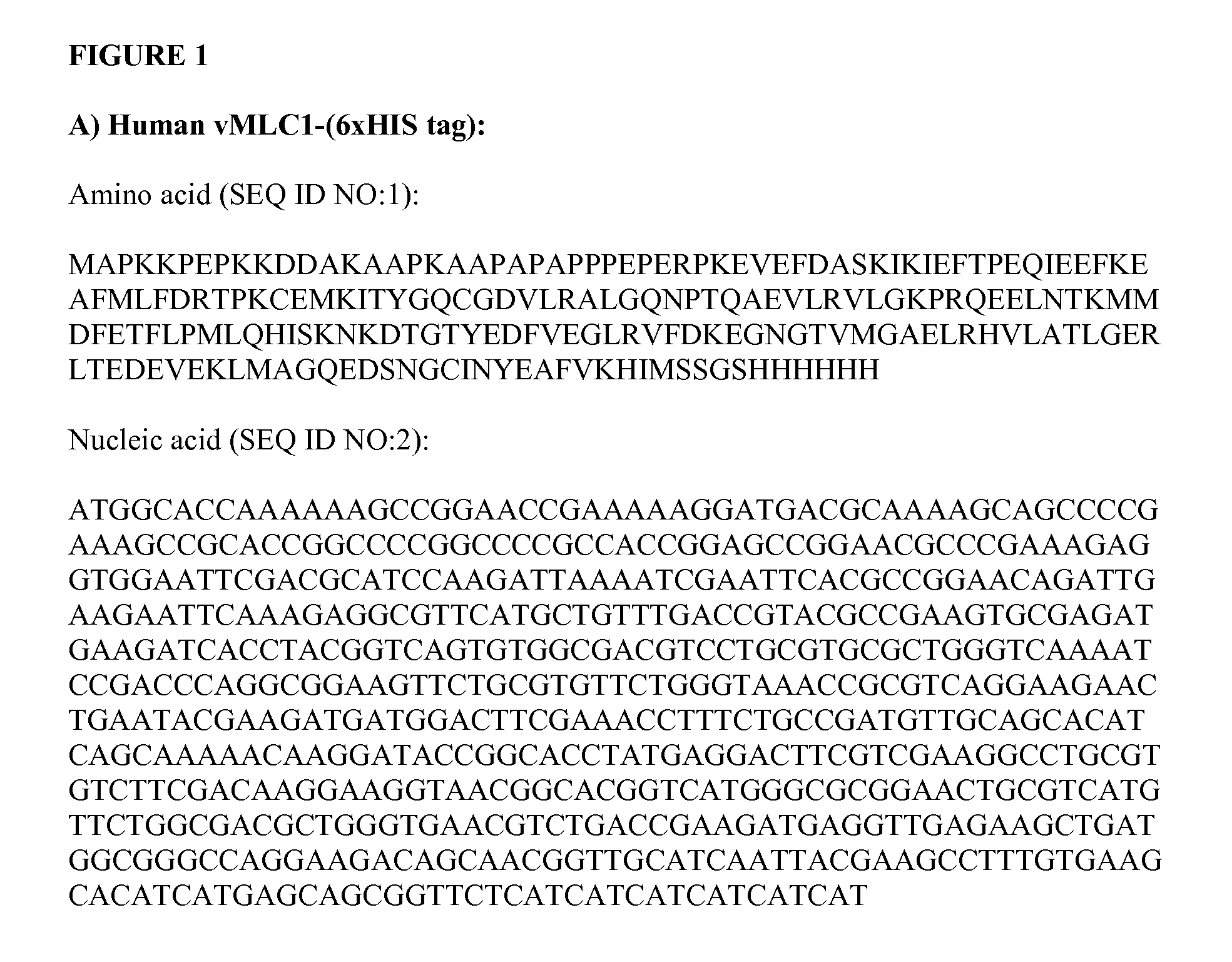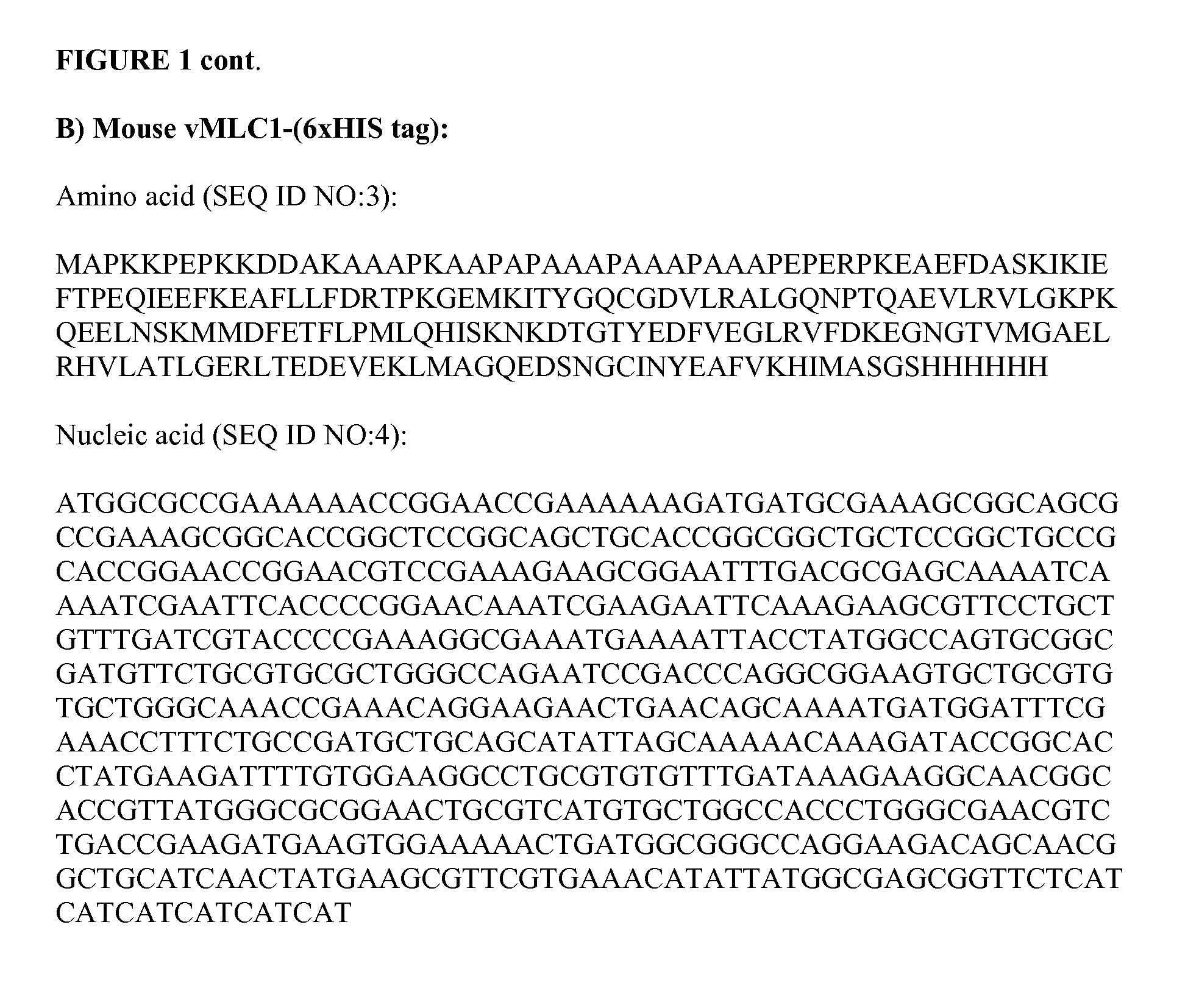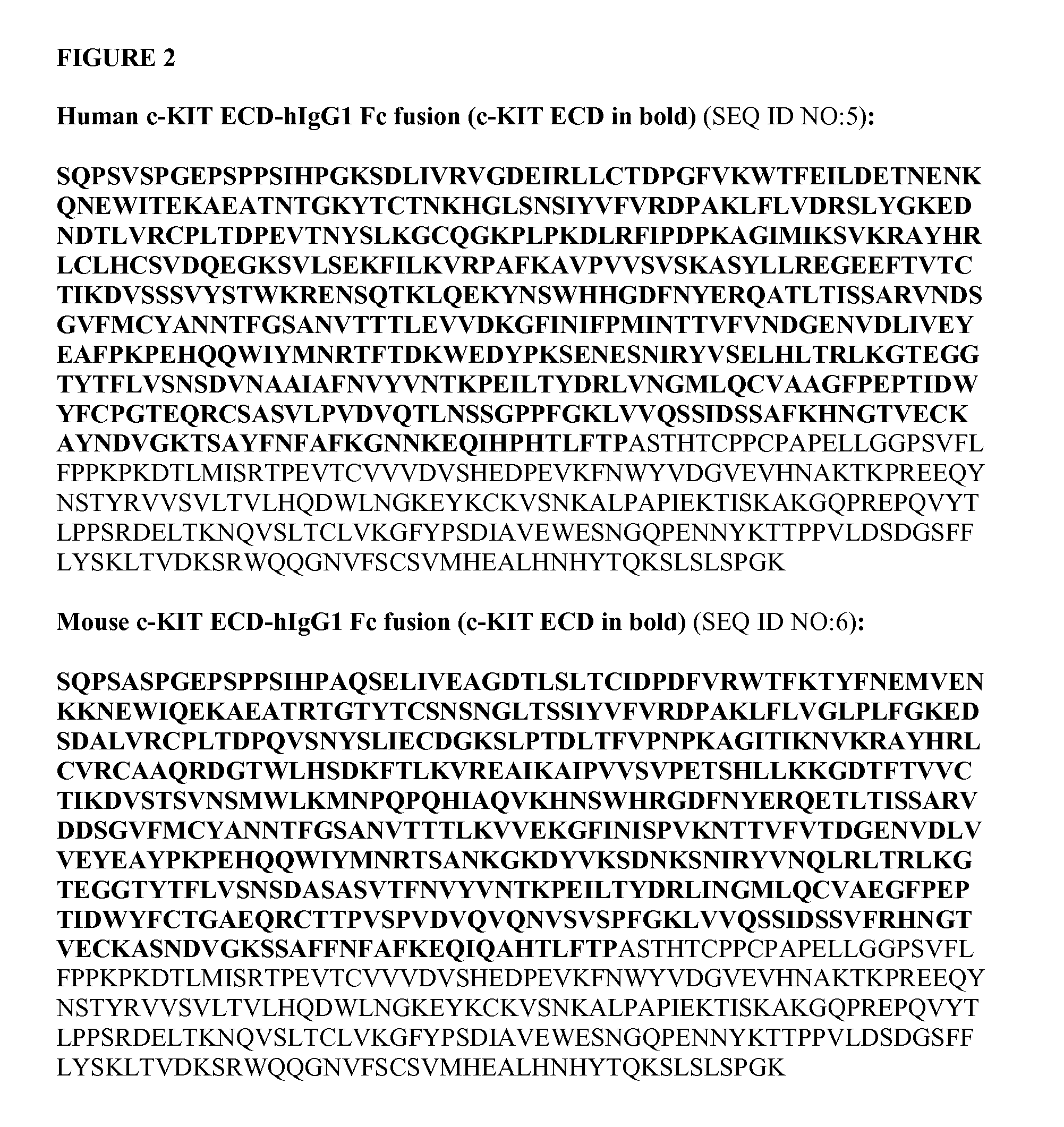Stem cell targeting
- Summary
- Abstract
- Description
- Claims
- Application Information
AI Technical Summary
Benefits of technology
Problems solved by technology
Method used
Image
Examples
example 1
Cloning and Expression of Proteins
[0225]1. Cloning and Expression of Recombinant Mouse and Human vMLC-1
[0226]The genes for ventricular myosin light chain 1 (vMLC1) (UniProt accession numbers P08590 (Human), P09542 (mouse)) were synthesised using PCR to also incorporate a C-terminal GlySer(His)6 tag.
[0227]The following PCR primers were used:
TABLE 1SCT016GCGCGGATCCACCGGCATGGCGCCGAAAAAACCGMouseGAACCGvMLC1(SEQ ID NO: 106)5′ primerSCT017GCGCAAGCTTATTAATGATGATGATGATGATGAGMouseAACCGCTCGCCATAATATGTTTCACGAACGCvMLC1(SEQ ID NO: 107)3′ primerSCT018GCGCGGATCCACCGGCATGGCACCAAAAAAGCCGHumanGAACCGvMLC1(SEQ ID NO: 108)5′ primerSCT019GCGCAAGCTTATCAGCTGCTCATGATGTGHuman(SEQ ID NO: 109)vMLC13′ primerSCT021GCGCAAGCTTATTAATGATGATGATGATGATGAGHumanAACCGCTGCTCATGATGTGvMLC1(SEQ ID NO: 485)3′ primer
The PCR products were digested with BamHI and HindIII and ligated into the vector pDOM50, a mammalian expression vector which is a pTT5 derivative with an N-terminal V-J2-C mouse IgG secretory leader sequence to faci...
example 2
Anti-MLC Antibody
1. Sequencing and Cloning of Recombinant Anti-MLC Antibody (39-15)
[0249]The N-termini of the 39-15 mAb (ATCC# HB11709) was determined by Edman sequencing as follows:
[0250]Briefly, the kappa chain (Vκ) or heavy chain (VH) was treated with pyroglutamate aminopeptidase (PGAP) from Pyrococcus furiosus (Sigma; Cat# P6236). 20 μL of mAb at 0.25 mg / mL in PBS was used to resuspend 0.01 units of lyophilised PGAP as supplied. The protein suspension was incubated at 75° C. overnight. The treated mAb was then subjected to reducing SDS-PAGE, Western blotting and Edman sequencing.
[0251]The N-terminal sequence of the kappa chain (Vκ) was identified as:
(SEQ ID NO: 123)DIVMSQSPSSLAVSA . . .
[0252]The N-terminal sequence of the heavy chain (VH) was identified as:
(SEQ ID NO: 124)xVQLQQSGAELASPGA . . .
[0253]Total cell RNA was extracted from 39-15 hybridoma cells (ATCC HB11709) using the Invitrogen PureLink micro-to-midi kit (Cat#12183-018) according to the manufacturer's instructions.
[0...
example 3
Humanization of Anti-MLC
[0266]To humanize the mAb, 2 human Vκ genes (IGKV1-39, IGKV1-4) and 4 human VH genes (IGHV1-3, IGHV1-46, IGHV1-8, IGHV5-51) were identified as having suitable properties to act as human framework scaffolds. The mouse V genes were aligned against the framework sequences of human V genes. The complimentary determining regions (CDRs) of the anti-MLC mAb were identified using the Kabat numbering system and grafted into the human scaffolds. For the J-region minigenes after CDRH3 which are absent in the original human scaffolds, the most similar sequence was chosen by comparing the mouse J-region in Kabat vol. I. For the light chain this is JK2 sequence FGQGTKLEIKR (SEQ ID NO: 137) and for the heavy chain this is JK4 sequence WGQGTLVTVSS (SEQ ID NO: 138).
[0267]Humanised variable domains were obtained through PCR assembly using overlapping oligos according to the method described by Stemmer et al. Gene 164(1):49-53, 1995. Restriction sites were installed by PCR of t...
PUM
| Property | Measurement | Unit |
|---|---|---|
| Temperature | aaaaa | aaaaa |
| Temperature | aaaaa | aaaaa |
| Temperature | aaaaa | aaaaa |
Abstract
Description
Claims
Application Information
 Login to View More
Login to View More - Generate Ideas
- Intellectual Property
- Life Sciences
- Materials
- Tech Scout
- Unparalleled Data Quality
- Higher Quality Content
- 60% Fewer Hallucinations
Browse by: Latest US Patents, China's latest patents, Technical Efficacy Thesaurus, Application Domain, Technology Topic, Popular Technical Reports.
© 2025 PatSnap. All rights reserved.Legal|Privacy policy|Modern Slavery Act Transparency Statement|Sitemap|About US| Contact US: help@patsnap.com



